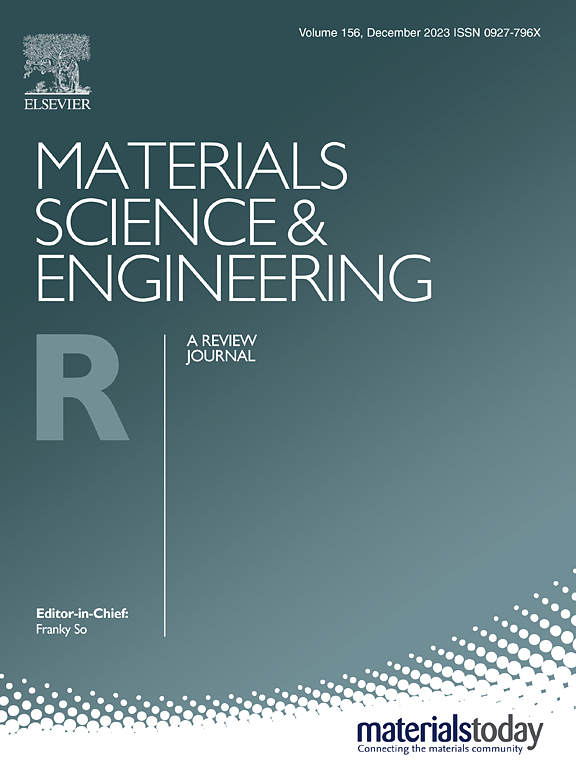推进共价有机框架与有机、无机和聚合物材料的整合,以实现光辅助绿色 H2 生成:新兴趋势综述
IF 31.6
1区 材料科学
Q1 MATERIALS SCIENCE, MULTIDISCIPLINARY
引用次数: 0
摘要
对可持续能源日益增长的需求推动了用于光催化制取 H2 的共价有机框架(COFs)的重大进展。在此背景下,本综述全面探讨了 COF 与各种有机、无机和聚合物材料的整合,以提高光辅助 H2 的生成。我们探讨了主要的合成方法,包括溶热、机械化学、声化学、界面和合成后修饰。此外,我们还讨论了光化学合成、微波辅助溶热技术、等离子体诱导合成和电子束诱导合成等创新方法,强调了这些方法在优化基于 COF 的异质结系统的结构和光催化性能方面的潜力。此外,还对各种复合材料的开发进行了广泛研究,如 MOF-COF、金属氧化物-COF、金属硫化物-COF、MXene-COF、g-C3N4-COF 和石墨氧化物-COF 复合材料,以研究它们在提高光催化效率方面的综合效应。我们对异质结系统及其结构特征给予了特别关注,这对于提高高效生成 H2 所需的光物理和化学特性至关重要。最后,我们的研究结果表明,迄今为止所报道的最高光催化 H2 生成率是通过特定的异质结系统实现的。通过对最新进展和新兴趋势的综述,本综述强调了基于 COF 的复合材料在革新可持续能源解决方案方面的潜力,并为未来旨在显著提高光照射下 H2 生成效率的研究方向提供了宝贵的见解。本文章由计算机程序翻译,如有差异,请以英文原文为准。
Advancing the integration of covalent-organic-framework with organic, inorganic, and polymeric materials for light-assisted green H2 generation: A review of emerging trends
The growing demand for sustainable energy has driven significant advancements in covalent organic frameworks (COFs) for photocatalytic H2 production. In this context, this review comprehensively examines the integration of COFs with various organic, inorganic, and polymeric materials to enhance light-assisted H2 generation. We explore key synthesis approaches, including solvothermal, mechanochemical, sonochemical, interfacial, and post-synthetic modifications. Additionally, innovative methods such as photochemical synthesis, microwave-assisted solvothermal techniques, plasma-induced synthesis, and electron-beam-induced synthesis are discussed, highlighting their potential to optimize the structural and photocatalytic properties of COF-based heterojunction systems. Furthermore, extensive research has been conducted on the development of various composite materials, such as MOF-COF, metal oxide-COF, metal sulfide-COF, MXene-COF, g-C3N4-COF, and graphitic oxide-COF composites, to investigate their combined effects in improving photocatalytic efficiency. Particular attention is given to heterojunction systems and their structural features, which are critical for enhancing the photophysical and chemical properties required for efficient H2 generation. Lastly, our findings reveal that the highest photocatalytic H2 generation rate reported to date has been achieved using specific heterojunction systems. Successively, by synthesizing recent advancements and emerging trends, this review underscores the potential of COF-based composites to revolutionize sustainable energy solutions and provides valuable insights into future research directions aimed at significantly enhancing H2 production efficiency under light irradiation.
求助全文
通过发布文献求助,成功后即可免费获取论文全文。
去求助
来源期刊

Materials Science and Engineering: R: Reports
工程技术-材料科学:综合
CiteScore
60.50
自引率
0.30%
发文量
19
审稿时长
34 days
期刊介绍:
Materials Science & Engineering R: Reports is a journal that covers a wide range of topics in the field of materials science and engineering. It publishes both experimental and theoretical research papers, providing background information and critical assessments on various topics. The journal aims to publish high-quality and novel research papers and reviews.
The subject areas covered by the journal include Materials Science (General), Electronic Materials, Optical Materials, and Magnetic Materials. In addition to regular issues, the journal also publishes special issues on key themes in the field of materials science, including Energy Materials, Materials for Health, Materials Discovery, Innovation for High Value Manufacturing, and Sustainable Materials development.
 求助内容:
求助内容: 应助结果提醒方式:
应助结果提醒方式:


